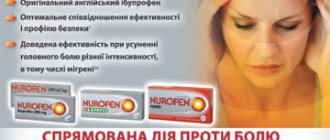Comparison of the effectiveness of Tizanidin-teva and Sirdalud
Sirdalud is more effective than Tizanidine-teva - this means that the ability of the drug substance to provide the maximum possible effect is different.
For example, if the therapeutic effect of Sirdalud is more pronounced, then it is impossible to achieve this effect with Tizanidin-teva even in large doses.
Also, the speed of therapy is an indicator of the speed of the therapeutic action; Sirdalud and Tizanidin-teva are also different, as is bioavailability - the amount of the drug reaching the site of its action in the body. The higher the bioavailability, the less it will be lost during absorption and use by the body.
Sirdalud tablets - composition and principle of action
The main substance of the product, sold under the name Sirdalud, is tizanidine in a volume of 2 mg or 4 mg. Auxiliary components are:
- stearic acid;
- MCC;
- lactose monohydrate;
- anhydrous colloidal silicon dioxide.
The drug is sold in 30 pieces per package. Each package contains 3 blisters, each containing 10 doses. One tablet can contain 2 mg or 4 mg of the active substance, which allows the doctor to prescribe an effective and safe therapeutic dose with an accuracy of 1 mg.
Tizanidine is a skeletal muscle relaxant. It mainly acts on the spinal cord, reducing the high tone of the muscular skeleton and releasing the clamped areas from spasm. An additional effect of the drug is an analgesic effect.
Tizanidine is actively absorbed in the gastrointestinal tract. After an hour, its maximum concentration in the blood is reached. The kidneys are involved in removing the substance from the body.
Sirdalud belongs to the centrally acting drugs of the muscle relaxant group.
Comparison of safety of Tizanidin-teva and Sirdalud
The safety of a drug includes many factors.
At the same time, in Tizanidin-teva it is quite similar to Sirdalud. It is important where the drug is metabolized: drugs are excreted from the body either unchanged or in the form of products of their biochemical transformations. Metabolism occurs spontaneously, but most often involves major organs such as the liver, kidneys, lungs, skin, brain and others. When assessing the metabolism of Tizanidin-teva, as well as Sirdalud, we look at which organ is the metabolizing organ and how critical the effect on it is.
The risk-benefit ratio is when the prescription of a drug is undesirable, but justified under certain conditions and circumstances, with the obligatory observance of caution in use. At the same time, Tizanidin-teva does not have any risks when used, just like Sirdalud.
Also, when calculating safety, it is taken into account whether only allergic reactions occur or possible dysfunction of the main organs. In other matters, as well as the reversibility of the consequences of using Tizanidin-teva and Sirdalud.
Use of tizanidine (Sirdaluda) in the treatment of pain and spasm
Tizanidine (Sirdalud) for pain syndromes Monotherapy with tizanidine (Sirdalud) for pain syndromes. Muscular-tonic and myofascial pain syndromes are very often the main reason for patients visiting a doctor. In the treatment of muscular-tonic pain, the central place belongs to local influences aimed at relaxing the muscle (massage, applications of warming ointments, gels, wet compresses, etc.), and in the case of myofascial pain syndrome - at the destruction of trigger points using post-isometric relaxation, the introduction of dry needles or anesthetic into the trigger zone. The duration of therapy is significantly reduced with effective pain relief for the patient. A generally accepted method of pain relief for myofascial pain is also the use of nonsteroidal anti-inflammatory drugs (NSAIDs). Muscle relaxants can provide great assistance in the treatment of muscular-tonic and myofascial pain syndromes by reducing pain intensity, reducing painful muscle tension, and improving motor activity. The use of muscle relaxants is justified by the recognition of the important role of muscle spasm in the pathogenesis of low back pain. Pain of various origins (due to damage to the intervertebral discs, facet joints of the spine, the muscles themselves and other reasons) increases the activity of motor neurons in the spinal cord, which leads to muscle spasm, which in turn plays a significant role in maintaining the pain itself. Pathologically increased muscle tone has various mechanisms for increasing pain: direct irritation of muscle pain receptors, deterioration of blood supply to muscles, which leads to the formation of a vicious circle leading to increased muscle spasm and accompanying pain. Muscle relaxants break the vicious circle of “pain – muscle spasm – pain” and, as a result, are able to speed up the recovery period [6]. In European recommendations for the treatment of acute pain in the lower back, tizanidine, dantrolene, diazepam, and baclofen are noted as effective muscle relaxants [19]. In our country, the most commonly used of these drugs is tizanidine (Sirdalud) [6]. The range of the effective daily dose of tizanidine (Sirdaluda) for pain syndromes is 2–12 mg (the optimal dose is 6–8 mg/day). For mild pain syndromes, the use of tizanidine (Sirdalud) can be limited to taking the drug at night at a dose of 2-4 mg until the pain stops (usually 5-7 days). In case of moderately severe pain syndrome, it is better to prescribe the first dose at night at a dose of 2–4 mg (the patient will “oversleep” the side effects), then gradually increase the dose to 6–8 mg/day. In severe cases, an additional 2–4 mg of tizanidine (Sirdaluda) may be added at night. A positive effect, as a rule, is noted already on the 3rd day of taking the drug. For chronic pain syndromes, a course of therapy is usually carried out for 2–4 weeks, adjusting the duration of treatment and dose of the drug depending on the effectiveness/tolerability. It should be noted that for mild to moderate pain associated with muscle spasm (eg, acute neck or lower back pain), tizanidine (Sirdaluda) alone may be sufficient. The effectiveness of tizanidine monotherapy (Sirdalud) has been confirmed in many studies, incl. and in a multicenter study of 2,251 patients with acute pain caused by muscle spasms in the low back, neck, or shoulder. 89% of patients rated the treatment outcome as “good” or “very good.” The study also noted very good tolerability of the drug (90% of patients rated tolerability as “good” or “very good”). These results allowed the authors to recommend tizanidine as the drug of choice among muscle relaxants for the treatment of pain associated with muscle spasm [13]. Combining tizanidine (Sirdaluda) with NSAIDs. For more severe pain, or when it is based on inflammatory changes, it is advisable to use tizanidine and NSAIDs together. Studies have shown that the use of tizanidine potentiates the effect of NSAIDs [9,16]. In addition, taking tizanidine (Sirdaluda) has a gastroprotective effect, which is associated with its adrenergic activity and antispasmodic effect. Tizanidine (Sirdalud) reduces basal and induced secretion of acid in the stomach, eliminates the imbalance of glycoproteins in the gastric mucosa and gastric secretions [11,16]. Experimental studies with the use of tizanidine have demonstrated a significant reduction in the ulcerogenic effect of acetylsalicylic acid, indomethacin, meloxicam, nimesulide and naproxen. The gastroprotective activity of tizanidine has also been proven in clinical studies. In patients receiving the combination of ibuprofen and tizanidine, the incidence of gastrointestinal side effects, including bleeding, was significantly (p=0.002) lower than in patients receiving the combination of ibuprofen and placebo [9]. Similar results were obtained when comparing the combination of diclofenac and tizanidine with the combination of diclofenac and placebo in a multicenter (12 centers), prospective, double-blind, placebo-controlled, randomized clinical trial conducted in 6 countries in the Asia-Pacific region and including 405 participants [16]. Gastropathy was reported in 12% of patients receiving the combination of diclofenac and tizanidine, versus 32% of patients receiving diclofenac in combination with placebo (p<0.001). The frequency of positive stool occult blood test results was 5% in the study group compared to 11% in the control group. The gastroprotective effect of Sirdalud is especially important for the management of patients with chronic pain syndromes who take NSAIDs for a long period of time (for rheumatological diseases), which often leads to the development of erosive gastritis and gastric and duodenal ulcers [1]. Combining tizanidine (Sirdaluda) with antidepressants and anticonvulsants. Treatment of chronic pain is more complex than treatment of acute pain and requires an integrated approach. The use of muscle relaxants here is only a component of treatment and must be justified by the presence of a therapeutic target - muscle spasm. In this regard, the patient’s expectations regarding the effect of the muscle relaxant must be correctly formed: the use of tizanidine (Sirdalud) can reduce pain, facilitate the patient’s movements, but will not stop the pain completely, because in chronic pain, the muscle component is not the leading one. Anticonvulsants and antidepressants are used in the treatment of chronic pain syndromes, so it is important to consider how tizanidine (Sirdalud) interacts with these medications. There are studies that show that tizanidine (Sirdalud) potentiates the effect of tricyclic antidepressants (amitriptyline) [10]. At the same time, it must be remembered that tizanidine (Sirdalud) cannot be combined with fluvoxamine, an SSRI antidepressant. Concomitant use of tizanidine (Sirdalud) and fluvoxamine can lead to a significant decrease in blood pressure and cause complications from the central nervous system. Thus, due to its high efficiency and minor side effects, a number of domestic and foreign experts consider tizanidine (Sirdalud) as the drug of choice for the treatment of acute and subacute myofascial pain in monotherapy and as the first-line drug of choice for the treatment of chronic myofascial syndrome in combination with other medications [2 ,13]. Tizanidine (Sirdalud) in neurological practice Disorders of muscle tone, associated pain syndromes, limitations in motor functions, secondary changes in joints and muscles form part of the clinical manifestations of many diseases of the nervous system. As a rule, the problem of increased muscle tone—hypertonicity or spasticity—acquires clinical significance [8]. However, the causes of hypertonicity and the mechanisms underlying it may be different, and therefore, differentiated treatment approaches are required to treat spasticity. The use of tizanidine (Sirdalud) has become most widespread in the treatment of spasticity in traumatic injuries of the brain and spinal cord, multiple sclerosis, and stroke. For spasticity associated with dystonic disorders, parkinsonism, it is more advisable to use other drugs (for example, clonazepam, diazepam). Spasticity leads to significant functional disorders and disruption of the patient's quality of life. However, it should be remembered that spasticity itself does not always require treatment. For example, in some patients with severe paresis, spasticity in muscles that anatomically resist gravity (antigravity muscles) may make standing and walking easier. In addition, the presence of increased muscle tone can prevent the development of muscle atrophy, soft tissue swelling and osteoporosis, and also reduce the risk of developing thrombosis of the lower extremities. Indications for the treatment of spasticity are only those cases where, due to increased tone, the patient’s “functioning, positioning or comfort” is impaired. Use of tizanidine (Sirdalud) for stroke. In case of stroke, the main goals of treatment are not only to reduce the severity of spasticity, but also to improve the functionality of paretic limbs, reduce pain and discomfort associated with high muscle tone, and facilitate care for a paralyzed patient. The most effective means in the fight against spasticity are physical therapy and physiotherapy, especially at an early stage. In cases where patients with post-stroke limb paresis have local spasticity, local administration of botulinum toxin preparations can be used. The use of antispastic drugs (muscle relaxants) for oral administration can make a significant contribution to the treatment of spasticity. The use of muscle relaxants can reduce muscle tone, improve motor functions, facilitate care for an immobilized patient, relieve painful muscle spasms, enhance the effect of physical therapy and, as a result, prevent the development of contractures. In our country, tizanidine, baclofen, tolperisone, and diazepam are used to treat post-stroke spasticity. An analysis of 20 studies comparing the use of various antispastic agents for a variety of neurological diseases accompanied by spasticity showed that tizanidine, baclofen and diazepam are approximately equally capable of reducing spasticity, but tizanidine (Sirdalud) is more effective than other antispastic agents in reducing clonus [14]. . Unlike baclofen, tizanidine (Sirdalud) does not cause a decrease in muscle strength while reducing spasticity (which is very important for improving the functionality of the limb), it is better tolerated by patients than baclofen and diazepam (with its use, patients are less likely to stop treatment due to side effects) [14,15,20]. Among the side effects identified during a study of tizanidine in patients with post-stroke spasticity conducted by Gelber (2001), the most common were drowsiness, weakness, dizziness, dry mouth, and orthostatic hypotension. These phenomena disappeared when the drug dose was discontinued or reduced. At the same time, not a single serious side effect was noted during treatment with tizanidine [Gelber, 2001], which allowed the authors to conclude that it is highly safe. Authors who have conducted studies examining the clinical effects of tizanidine (Sirdalud) and many clinicians agree that among muscle relaxants, tizanidine (Sirdalud) is the drug of first choice for the treatment of post-stroke spasticity [7,12,14,15,20]. To treat spasticity due to neurological diseases, higher doses of tizanidine (Sirdaluda) are usually used than for the treatment of pain syndromes. Typically, the optimal therapeutic effect is achieved with a daily dose of 12 to 24 mg (effective dose range is 2–36 mg). However, given the dose-dependent increase in the risk of side effects with increasing doses of the drug, treatment should begin with small (2-6 mg/day) doses, then gradually increase the dose until a therapeutic effect is achieved, observing individual tolerability (usually by 2- 4 mg every 3–7 days, dividing the daily dose into 3 doses). If side effects occur, you can temporarily stop increasing the dose (if you do not increase the dose, in many cases the side effects disappear after a few days) and continue increasing the dose after the patient gets used to the drug. This allows, firstly, to select the most effective minimum dose of the drug for a particular patient (in some patients (due to individual variability), a sufficient therapeutic effect may occur when taking lower doses than the recommended standards), and also to relieve unnecessary suffering in patients with individual poor tolerability of tizanidine (in patients with poor tolerance to tizanidine, side effects appear already when using a dose of 2–4 mg/day). Dose titration usually takes 2–4 weeks. The duration of treatment is determined individually (from several weeks to several months) [8]. The use of prolonged forms of tizanidine (Sirdalud MR). For long-term use, a convenient dosage form of tizanidine is in the form of modified-release capsules (Sirdalud MR), which is available in a dose of 6 mg. Clinical experience shows that for most patients the optimal dose is 12 mg/day. (2 capsules), in rare cases it may be necessary to increase the daily dose to 24 mg. Treatment also begins with a minimum dose of 6 mg (1 capsule), if necessary, gradually increasing the dose by 6 mg (1 capsule) at intervals of 3–7 days. Use of tizanidine (Sirdalud) for traumatic brain injury. Among the muscle relaxants, tizanidine (Sirdalud) is the drug that is most often used to treat spasticity associated with traumatic brain injury [5]. The reasons for prescribing, dose selection tactics and precautions are the same as for the treatment of post-stroke spasticity. Use of tizanidine (Sirdalud) for multiple sclerosis and spinal injury. Limitation of mobility in patients with multiple sclerosis is associated with a significant increase in muscle tone of the spastic type, mainly in the lower extremities. The basis for the treatment of muscle tone disorders are special exercises that should be performed under the supervision of a specialist in physical therapy. Drug therapy plays an additional role. Medicines used to treat spasticity include tolperisone, baclofen, tizanidine, and diazepam. Drug treatment of spastic tone should be individual, controlled by a doctor and the patient himself. This is due to the fact that most drugs that reduce tone increase the weakness of the paralyzed limbs and can lead to a deterioration in the patient's condition. In this regard, the dose of the antispastic drug must be gradually increased from the minimum to the optimal, when spasticity decreases, but there is no increase in weakness. Sirdalud in this regard is more preferable compared to baclofen and diazepam (with the use of tizanidine (Sirdalud), muscle weakness develops less frequently; due to excessive relaxation of the bladder sphincters when using baclofen, patients more often complain of an increase in pelvic disorders; the use of diazepam is associated with a higher frequency development of side effects, drug dependence) [3,17]. Sirdalud is more effective compared to other muscle relaxants against clonus [14]. The optimal daily dose of Sirdalud for the treatment of spasticity in multiple sclerosis is 6–8 mg (maximum daily dose is 36 mg). Treatment should also be started with a minimum dose, and the dose should be increased in increments of 2 mg [3]. In patients with spasticity due to spinal injury, tizanidine (Sirdalud) and baclofen are most often used, and diazepam is also used to relieve painful muscle spasms. Treatment begins with a minimum dose (4–6 mg of Sirdalud), which is gradually increased to a therapeutic dose over several days or weeks, trying to avoid unwanted side effects (muscle weakness and sedation). Baclofen is effective mainly when administered intrathecally; when taken orally, tizanidine (Sirdalud) gives a more pronounced positive effect and is better tolerated by patients than baclofen [18]. For other types of spasticity encountered in neurological practice (parkinsonism, torsion dystonia, torticollis, ALS), the use of tizanidine (Sirdaluda) is not justified. In these cases, the use of clonazepam and diazepam is more appropriate. These drugs have higher the likelihood of side effects, but also the antispathetic effect in them is more pronounced with these disorders. Optimization of treatment when using thizanine (sirdalud) is a fairly wide range of effective doses of thizanidine (sirdalud) (from 2 to 36 mg/day) allows the use of the drug for short and long -term treatment for pain and spasticity in the form of monotherapy or in combination with other drugs means. To improve clinical effectiveness, the following recommendations on the practical use of thizanine (sirdalud) may be useful. The beginning of treatment with small doses of the drug. The development of side effects when using thizanine (sirdalud) is dose -dependent (for example, the probability of developing side effects when using a dose of 12–24 mg is 2 times higher than when using a dose of 6-12 mg). At the same time, a sufficient therapeutic effect is sometimes possible to achieve at smaller doses than is recommended in treatment standards. In this regard, the treatment is recommended to start with a minimum dose (2–4 mg), then gradually increase it, observing individual tolerance. Gradual abolition of the drug. After prolonged use of Tizanidine (sirdaluda), especially in large doses, it is necessary to carry out a gradual abolition of the drug, because A sharp cancellation can cause the development of muscle weakness (this is also characteristic of other muscle relaxants). The use of Tizanidine (Sirdalud) to normalize sleep among the side effects of Tizanidine (Sirdalud) is noted increased drowsiness. Therefore, patients who have drowsiness when taking thizanidine (sirdalud) should avoid all activities requiring increased concentration of attention and speed of reaction. At the same time, many patients, especially with chronic pain syndromes, are disturbed by sleep. The indicated side effect of Tizanidine (Sirdalud) can be used for therapeutic purposes by prescribing the drug at night to improve the patient's sleep. Given the fact that the effect of Tizanidine (Sirdaluda) is short -term, some doctors in order to maintain the social activity of the patient, prescribe the drug only at night or distribute the main daily dose of the drug in the afternoon and at night. This allows the patient to maintain social activity in the first half of the day (work, drive a car), and in the evening it helps to fall asleep, as well as “sleep” other side effects. The use of thizanine (sirdalud) as an antihypertensive agent with one of the side effects when using thizanine (sirdalud) is a moderate decrease in blood pressure. Simultaneous use, together with antihypertensive agents, can enhance the antihypertensive effect. If it is necessary to prolonged use of thizanidine (sirdaluda) (for example, in the treatment of post -industry spasticity), the hypotensive effect of thizanine (siredaluda) can be used to reduce the dose or to cessation of drugs that reduce blood pressure if the patient receives antihypertensive therapy. The conclusion of Tizanidine is an effective drug both in the treatment of spasticity with a number of neurological disorders, and for the treatment of a wide range of pain syndromes associated with increasing muscle tone. However, the success of the treatment in each case depends not only on the correct choice of one or another drug from the point of view of the symptoms described in the instructions for use and evidence and evidence for the effectiveness of the drug, but also from how much the attending physician is to correlate the features of pharmacokinetic The properties of the drug with individual clinical manifestations of the disease in this (specific) patient. Literature 1. Badokin V.V. The use of sirdalud in rheumatological practice // Rus. honey. magazine. - 2005. - T. 13, No. 24. - S. 1588–1589. 2. Vorobyova O.V. The possibilities of alpha2 - adrenergic agonists in the treatment of myofascial pain // Rus. honey. magazine - 2007. - No. 5. - C. 445–448. 3. Gusev E.I., Boyko A.N. Scattered sclerosis: from new knowledge to new treatment methods // Ros. honey. magazine. - 2001. - No. 1. - P. 4–10. 4. Danilov A.B. The possibilities of using Tizanidine (Sirdalud) in clinical practice. Review of literature // RMG. - 2010. - No. 1. - P. 4–10. 5. Parfenov V.A. Maintenance of patients with spasticity // Rus. honey. magazine. - 2004. - T. 12, No. 10. 6. Parfenov V.A. Diagnosis and treatment for acute pain in the lower back // Rus. honey. magazine - 2007. - T 15 No. 6. 7. Parfenov V.A. Post -stroke spasticity and its treatment // Rus. honey. magazine - 2006. - T. 14, No. 9. 8. Shirokov, E.A. Sirdalud: areas of clinical use // Rus. honey. magazine - 2004. - No. 14. - C. 874–875. 9. Berry H., Hutchinson DR Tizanidine and Ibuprofen in Acute Low - Back Pain: Results of a Double - Blind MultIdy Study in General Practice // J. Intern. Med. Res. 1988. Vol.16. R. 83–91. 10. Bettucci D., Testa L., Calzoni S. et al. Combination of Tizanidine and Amitriptyline in the Prophylaxis of Chronic Tension - Type Headache: Evaloution of Efficacy and Impact on Life // Jeadache Pain. 2006. Vol. 7 (1). P. 34–36. 11. COWARD DM Tizanidine: Neuropharmacology and Mechanism of Action // Neurol. 1994. Vol. 44 (SUPPL. 9). P. 6–11. 12. Gelber DA, Good DC, Dromerick A. et al. Open - Label Dose - Titration Safety and Efficacy Study of Tizanidine Hydrochloride in the Treatment of Spasticity Associated with Chronic Stroke // Stroke. 2001. Vol.32. P. 1841–1846. 13. Hutchinson DR, Daniels F. A Multinational Study in General Practice to Evaluate the Effectivens and TolaBility of Tizanidine in the Treatment of Painful Muscle Spassms // Br. J. Clin. Res. 1990. Vol. 1. P. 39–48. 14. Lataste X., Emre M., Davis C., Groves L. Comparative Profile of Tizanidine in the Management of Spasticity // Neurol. 1994. Vol. 44 (SUPPL 9). P.53–59. 15. Leiphart JW, Dills CV, Levy Rm Alpha2 - Adreenergic Reception Subtype Specificity of Intrathecelly Administic Tizanidine Ussia For Neuropathic Pain // J. Neurosur G. 2004. Vol. 101 (24). P. 641–647. 16. Sirdalud Ternilin Asia - Pacific Study Group. Efficacy and Gastroproprotective Effects of Tizanidine Plus Diclofenac Versus Plus Diclofenac in Painful Muscle Spasm // Curr. Ther. Res. 1998. Vol. 59. P. 13–22. 17. Smolenski C., muff S., Smolenski - Kautz S. N Multiple Sclerosis // Curr. Med. Res. Opin. 1981. Vol. 7 (6). P. 374–383. 18. Tarrico M., Adone R., Pagliacci C., Telaro E. Pharmacological Intervents for Spasticity Following Spinal Cord Injury. Cochrane Database Systematic Review // The Cochrane Library, 2000. Issue 4. 19. Van Tulder M., Bekkering T. et al. European Guidelines for the Management of Acute Nonspecific Low Back Pain in Primary Care // EUR. Spine J. 2006. Vol. 15. (SUPPL. 2). S.169 - S.191. 20. Wallace JD Summary of Combined Clinical Analysis of Controlled Clinical Tials with Tizanidine // Neurol. 1994. Vol. 44 (SUPPL 9). P60 - P69.
Comparison of habituation in Tizanidin-teva and Sirdalud
Like safety, addiction also involves many factors that must be considered when evaluating a drug.
Thus, the totality of the values of such parameters as “o syndrome” in Tizanidin-teva is quite similar to the similar values in Sirdalud. Withdrawal syndrome is a pathological condition that occurs after the cessation of intake of addictive or dependent substances into the body. And resistance is understood as initial immunity to a drug; in this it differs from addiction, when immunity to a drug develops over a certain period of time. The presence of resistance can only be stated if an attempt has been made to increase the dose of the drug to the maximum possible. At the same time, in Tizanidin-teva the meaning of the “syndrome” is quite small, however, the same as in Sirdalud.
Sirdalud: what is the drug prescribed for?
The reason for prescribing Sirdalud is various muscle spasms caused by diseases of the spine, including localization in the cervical lumbar region. In addition, pain after surgical reduction of intervertebral hernias is also relieved by taking Sirdalud.
If the cause of pain in the muscles is multiple sclerosis, or a congenital pathology in the form of diagnosed cerebral palsy, which causes spasticity of the muscular skeleton, Sirdalud is prescribed.
Comparison of side effects of Tizanidin-teva and Sirdalud
Side effects or adverse events are any adverse medical event that occurs in a subject after administration of a drug.
Tizanidin-teva's state of adverse events is almost the same as Sirdalud's. They both have few side effects. This implies that the frequency of their occurrence is low, that is, the indicator of how many cases of an undesirable effect of treatment are possible and registered is low. The undesirable effect on the body, the strength of influence and the toxic effect of Tizanidin-teva are similar to Sirdalud: how quickly the body recovers after taking it and whether it recovers at all.
Medicine Sirdalud: instructions
For the treatment of spasticity of skeletal muscles caused by neurological pathology, 6 mg of the drug per day is prescribed. The dose is divided into three doses in equal quantities. Thus, the minimum single dose starts from 2 mg. If it is necessary to increase the therapeutic effect, the daily dose is increased gradually, adding 2 mg per day every week. Severe diseases of muscle tone are relieved with a dose of 12 to 24 mg per day. The number of receptions can be increased up to 4 times.
At the same time, you should not exceed the maximum allowable amount of 36 mg per day.
For older patients over 65 years of age, it is recommended to begin treatment with a minimum amount of Tizanidine. If 2 mg does not give the expected effect, a gradual increase in daily intake is allowed while monitoring the patient's condition. It is recommended to follow the same regimen when treating patients with impaired renal function. Eating may increase the period during which the maximum amount of Tizanidine is concentrated in the patient's blood. Therefore, take the medicine an hour after eating.
Comparison of ease of use of Tizanidin-teva and Sirdalud
This includes dose selection taking into account various conditions and frequency of doses. At the same time, it is important not to forget about the release form of the drug; it is also important to take it into account when making an assessment.
The ease of use of Tizanidin-teva is approximately the same as Sirdalud. However, they are not convenient enough to use.
The drug ratings were compiled by experienced pharmacists who studied international research. The report is generated automatically.
Last update date: 2020-12-04 13:48:04
Overdose of Sirdalud
If the patient was unjustifiably prescribed the maximum dose of the drug, or he independently increased the number of doses, the following adverse reactions caused by an overdose may be observed:
- vomit;
- drowsiness;
- loss of coordination;
- dizziness;
- decrease in systolic pressure;
- miosis;
- respiratory rhythm disturbances.
Significantly exceeding the maximum permissible daily dosage can put the patient into a coma.
special instructions
Due to the fact that taking Sirdalud is often accompanied by drowsiness and decreased concentration, it is not prescribed to people whose daily activities involve driving vehicles or operating complex equipment.
Also, the drug is contraindicated for people with lactose intolerance, which is explained by the presence of lactose monohydrate.
The drug is sold strictly according to prescription. The validity period after which the drug must be disposed of is three years from the date of manufacture.
Sirdalud
To figure out whether Mydocalm or Sirdalud is better, let’s look at the last drug on our list. It is used for muscle spasticity and produces a central muscle relaxant analgesic effect.
This remedy is usually used for painful muscle spasms, during rehabilitation after spinal surgery, for skeletal muscle spasms and other conditions. Sirdalud is prohibited if the body is highly sensitive to tizanidine or other active ingredients or if liver function is severely impaired.
Side effects include drowsiness, increased fatigue, nausea, dizziness, disruption of the gastrointestinal tract, muscle weakness and some other abnormalities. Follow the dosage and do not stop taking the drug abruptly, and then the listed effects will be avoided.
Comparison of drugs
Sirdalud is the most modern muscle relaxant, suitable for combating skeletal muscle spasticity in diseases of a neuralgic nature:
- chronic myelopathy;
- multiple sclerosis;
- degenerative pathologies of the spinal cord;
- circulatory disorders in the brain.
The drug Sirdalud MR is available in a special form that creates a prolonged release of the active component tizanidine. Thus, the drug can be taken in the morning, and the side effects are less pronounced.
If you don’t know what to choose Sirdalud or Baclofen, it’s better to choose the first one if it suits you for the price.
Mydocalm is an older medicine that needs to be taken several times during the day. The drug has been well studied and has many indications, and the side effects are similar to those described above. Sirdalud, Mydocalm and analogues of these drugs have clear indications and contraindications, so only doctors should prescribe them.
Methods of use and dosage Mydocalm
Tablet Mydocalm is taken orally. The dosage depends on the severity of the lesion, the individual characteristics of the body and the type of disease. The daily norm is divided into 3 equal doses. On average it is from 150 to 450 mg. At the initial stages, a minimum dose is prescribed. The tablets are taken after meals with water.
Dosage depending on age category:
- from 3 to 6 years: per 1 kg of weight 5 mg;
- from 6 to 14 years: per 1 kg of body weight from 2 to 4 mg;
- adolescents over 14 years of age and adults: at least 50 mg twice daily.
The injection solution is administered in different ways:
- Intravenously. Use 1 ml once a day.
- Intramuscularly. It is prescribed in a daily dosage of 200 mg (2 ml), divided into 2 times.








